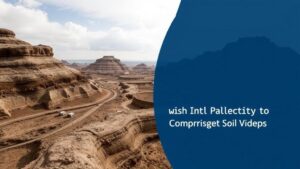Detecting Along Desert Trails for Pioneer Gold and Silver Hoards
Detecting Along Desert Trails for Pioneer Gold and Silver Hoards
Gold and silver prospecting have long been entrenched in the lore of American history, especially during the 19th-century gold rushes. Detecting along desert trails, where pioneers and fortune seekers traveled, can lead to uncovering previously forgotten riches. This article explores the methodologies and technologies applied in detecting hoards along these arid pathways, highlighting critical considerations and real-world examples.
The Historical Context of Desert Trails
Desert trails were vital arteries for pioneers during the gold and silver rushes. As miners migrated to regions such as California, Nevada, and Arizona in search of wealth, many lost their lives or abandoned their belongings along these treacherous routes. The old wagon trails often hosted tools, supplies, and, in some instances, caches of gold and silver.
For example, historical records indicate that over $2 billion worth of gold was mined during the California Gold Rush (1848-1855). Contextual understanding of these trails helps modern-day prospectors pinpoint locations most likely to harbor hidden treasures. geographical and historical landscapes can serve as signposts in treasure hunting endeavors.
Methodologies for Detecting Treasure
Detecting treasure along these routes involves integrating historical research, geographical analysis, and technological tools. The following methodologies are commonly employed:
- Historical Research: Digging into old diaries, maps, and archival records can yield insights about where treasure may lie. Indeed, many pioneers documented their routes and significant finds.
- Remote Sensing Technologies: Tools such as Ground Penetrating Radar (GPR) and aerial imaging can help identify anomalies in the terrain, which may indicate buried treasures or irregularities where caches were hidden.
- Metal Detecting: Advanced metal detectors equipped with features such as discrimination settings can help prospectors distinguish between valuable metals and less worthy debris.
- Soil Sampling: Analyzing soil composition can reveal signs of human activity, possibly guiding to areas where treasure was once buried.
Real-World Applications
Numerous stories illuminate the success of treasure hunters on desert trails. For example, in 2012, a treasure hunter in Nevada discovered a hoard of silver coins dating back to the late 1800s near the famed Comstock Lode using a metal detector. Initial research combined with metal detecting led to this significant find, estimated to be worth over $1 million.
Plus, a group of amateur prospectors discovered gold nuggets along the historic Miller Flat in Arizona using a combination of researched routes and metal detection technology. Their meticulous approach showcases a successful blend of historical knowledge and modern techniques.
Challenges and Considerations
While the potential for finding treasures is tantalizing, there are challenges to bear in mind:
- Legal Restrictions: Many areas along desert trails are protected lands. Understanding local laws and regulations regarding treasure hunting is crucial, as some finds may legally belong to the state or federal government.
- Environmental Factors: The arid conditions of desert environments can hinder thorough searches. Prospectors must plan for extreme temperatures and navigate delicate ecosystems.
- Time Investment: Effective detecting often requires extensive time spent researching and physically combing through large areas, testing equipment, and analyzing results.
Actionable Takeaways
For aspiring treasure hunters seeking gold and silver hoards along desert trails, several actionable strategies emerge:
- Conduct thorough historical research beforehand to identify promising locations.
- Use a combination of modern technology (such as GPR and metal detectors) and traditional methods.
- Adhere to local laws and obtain necessary permits when needed.
- Prepare physically and technologically for diverse environmental conditions.
Ultimately, detecting along desert trails for pioneer gold and silver hoards is a pursuit that marries the excitement of adventure with the rigor of historical scholarship and modern technology. As the stories of past discoveries testify, persistence, careful planning, and respect for nature can lead to extraordinary finds amid the sandy expanses of the American desert.

